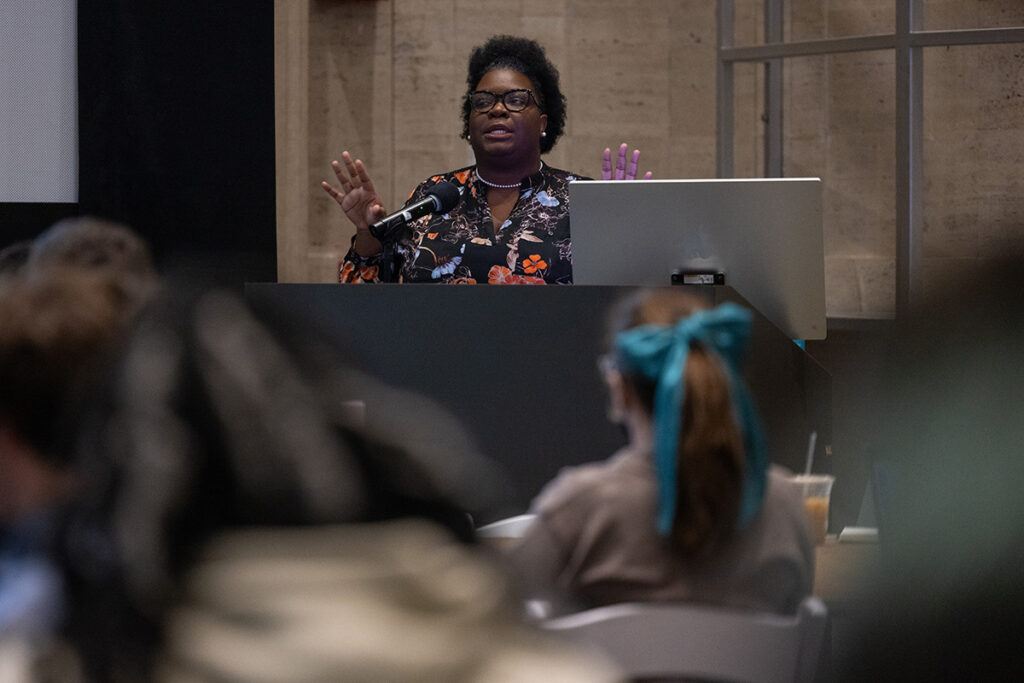Teach-in on Race Explores Belonging, Empowerment

Belonging is not the same as fitting in.
“True belonging never asks us to change who we are, it demands us to be who we are,” according to academic and podcaster Brené Brown.
Emerson’s Director of Strategic Initiatives for Equity & Social Justice Mary Whitehead used Brown’s definition of belonging to set the scene for Fostering Belonging Through the Equity and Empowerment Lens, the first session of the 2025 Teach-In on Race.
This year’s Teach-In sessions leveraged the expertise of Emerson faculty and staff, as well as guest scholars who reflected on racial inequities, community building, and how to effect change in small and big ways. The Teach-In, now in its ninth year, was held February 5 and 6, and was presented in partnership with EmersonTogether.
Whitehead’s session asked participants to consider “What does it mean to frame belongingness in everything we do?” pointing out that feelings of belonging have been linked in studies to higher academic achievement, retention, and engagement for students, as well as job satisfaction and overall wellbeing for faculty and staff.
“Sometimes… I want to fit in,” Whitehead said, “[but] my level of creativity and innovation really expanded when I felt valued in a space.”
Gathered in groups around tables in the Bordy Theater, community members were asked to explore the strategies that foster a sense of belonging. They also examined potential barriers to belonging.
For a “final project,” participants were asked to turn an equity and empowerment lens to a scenario: increasing access to internships for low-income and first-generation students.
Business of Creative Enterprises major Miranda Botran ’27 said her biggest takeaway was that belonging is less about fitting in with a certain group and more about feeling safe.
“Also, to think about possible solutions for students to have more opportunities, not only socially, but outside of school,” said Botran.
Categories